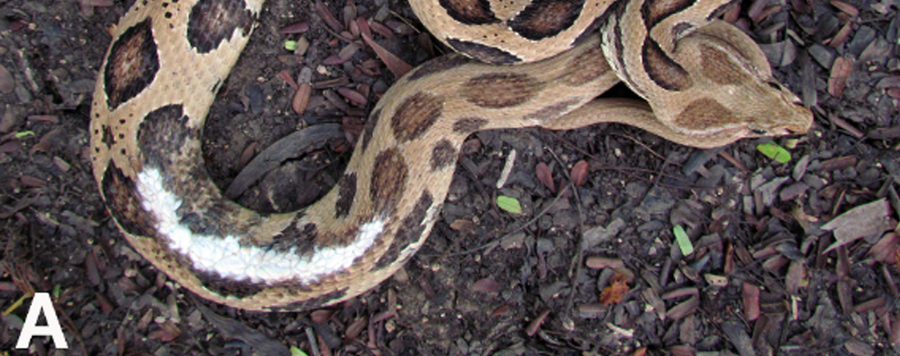
An unusual white dorsal patch in Russell’s Viper, Daboia russelii (Shaw & Nodder, 1797), from Surat District, Gujarat State, India
Russell’s Viper, Daboia russelii, is one of three species of the family Viperidae found in southern Gujarat State, India, which includes Surat District (Desai, 2017; Parmar and Tank, 2019; Patel and Vyas, 2019). It is a venomous, solenoglyphous snake, whose ecological niche as a sit-and-wait predator in rice paddies and along forest paths has caused it to be one of the world’s most significant sources of snakebite, causing tens of thousands of envenomings annually (e.g., Warrell, 1989; Kularatne et al., 2014). The biology, toxicology, and toxinology of this species are therefore of great interest from a human perspective, but the diagnosis and treatment of diseases, disorders, and injuries of D. russelii itself are scarcely known. In fact, to the best of our ability, we have only been able to locate three publications, covering cancerous growths in D. russelii, namely pericardial fibromyxoma (Zeigel and Clark, 1971) and fibrosarcoma (Effron et al., 1977; Wadke and Balgi, 2020). We here report on an unusual white lesion on the dorsum of a D. russelii individual from Gujarat State, India.






